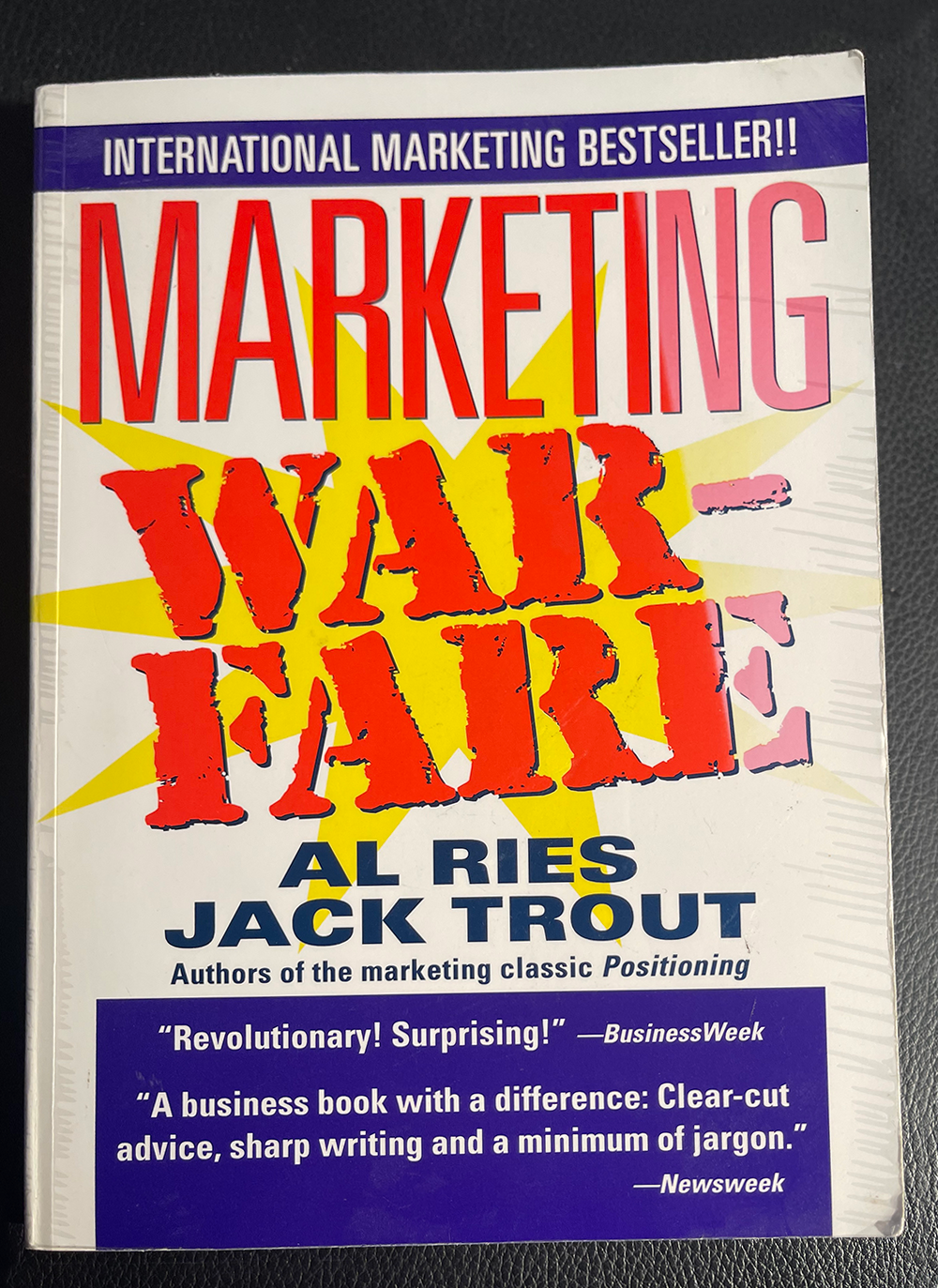
Flanking.

It’s almost 40 years since Al Ries and Jack Trout wrote ‘Marketing Warfare’ (MW) which itself is based on a book written almost 200 years ago by a Prussian General, Karl von Clausewitz, titled ‘On War’.
Both books have made it to the “important shelf” which is my library’s equivalent of the home screen on your mobile.
That’s because despite their age, the lessons are timeless and seem to be impermeable to change.
There’s one chapter in MW which I’ve just reread for the hundredth time at least, and suggest you might benefit from studying it too.
Chapter 9. Principles of flanking warfare
“Flanking is the most innovative way to fight a marketing war.”
Flanking principle no. 1 – A good flanking move must be made into an uncontested area.
Unless you have incredibly deep pockets, and even if you do, there’s still little chance of winning by going head to head against the modern day giants such as Google, Amazon, or Rightmove, or indeed dominant local businesses that are so deep rooted in your community or sector.
Instead, you need to create your own space to conquer.
Flanking principle no. 2 – Tactical surprise ought to be an important element of the plan.
Flanking is all about a surprise attack. It must cause the enemy to say, “We never saw that coming.”
It’s most powerful when it not only creates new territory, but also takes away from the existing, AND demoralises the competition by highlighting the weakness of their scale; their inability to innovate and deliver as quickly as smaller businesses can.
Flanking principle no. 3 – The pursuit is just as critical as the attack itself.
“Without pursuit,” said Clausewitz, “no victory can have a great effect.”
In simple terms, flanking requires reinforcement after the initial victory. And this means resources might need to be deployed from other areas, which could be costly. But better to create, conquer, and retain new territory than to concede after initial success because you’re fighting on too many fronts.
How might you apply these principles?
I suggest there are three that many will do well to consider.
A. Flanking with a high price
Forget volume, and go for those who will pay more. Rather than compete with a lower price, deliberately set a new high bar and create a service proposition that a select few, (but enough), will pay for.
For example, an estate agent that charges 2.5% but delivers a combination of exquisite marketing and truly individual, (as opposed to merely personal) service. Or a conveyancer that is five times more expensive than the volume companies, but enables a sale to be exchange ready in 7 days or less.
B. Flanking with the business model
A current example is the development of the self-employed estate agent model, albeit some of these seem to be turning as corporate as those they seek to displace.
Take another look at the best Australian agents, make that the very best such as Alexander Phillips who personally lists and sells properties earning him $12-15million a year in commission. Yes, Alex has built a business around him, but he remains true to his initial flanking maneuver around the behemoths down under, (and there are as many there as in the UK) by being available for his clients above all else. His reputation is built entirely on trust – instruct Alex and you get Alex, and he always delivers.
C. Flanking with the terms of business
Purplebricks attempted this flanking approach, but failed because they tried to scale too quickly. But that doesn’t mean their basic idea of charging upfront, as opposed to “no sale, no fee”, can’t work. Indeed, Ian Preston of Preston Baker, having proved it with his own business, is now showing many other agents how to adopt it, and last week, in their first week of adopting this different charging model, one agent generated £8,000 in upfront fees in just 7 days.
Many years ago, my marketing agency used this flank when we charged a monthly retainer and rebated all media commissions, going against the established norm at that time.
Of course, there are many other ways to use flanking warfare such as product development, and different distribution; these three examples are far from the complete set.
But it’s the principles that will serve many well at this time – definitely for my businesses, and probably for yours as well.
Join over 6,000 property professionals, including leading estate and letting agents and receive information, insight, ideas and inspiration (four-i) from top estate agency coach Peter Knight, straight to your inbox every Monday. Join now
Find out more about Property Academy and the services we provide here.
Agree or disagree with the views expressed in this newsletter? Share the article and your views on social media today.
Follow our social channels here: